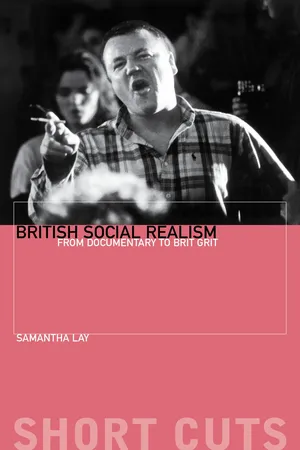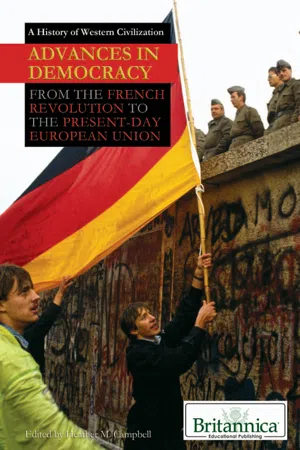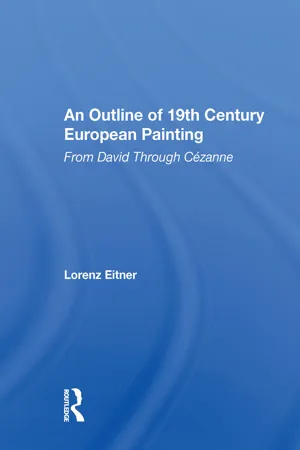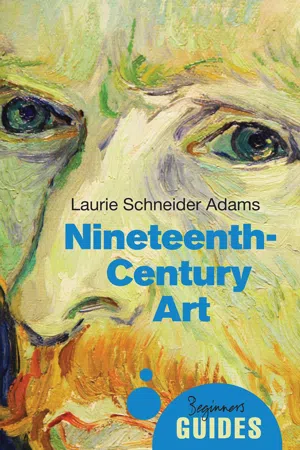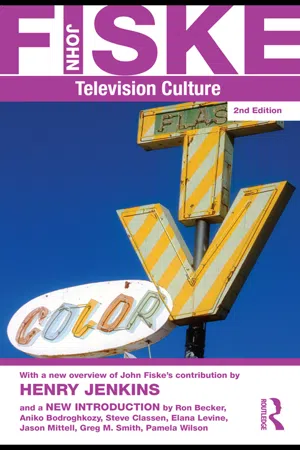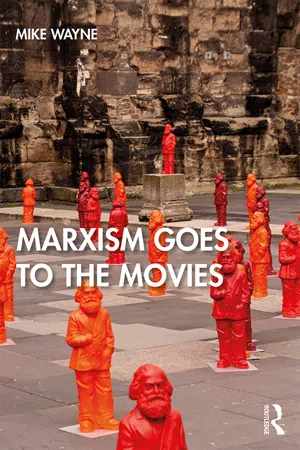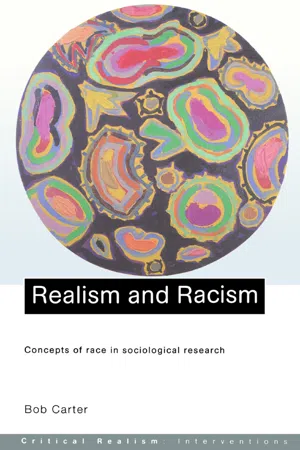History
Social Realism
Social Realism is an artistic movement that emerged in the 19th century, aiming to depict the harsh realities of everyday life, particularly focusing on the working class and social issues. It often portrayed scenes of poverty, oppression, and injustice, serving as a form of social critique. Artists sought to bring attention to societal problems and advocate for change through their work.
Written by Perlego with AI-assistance
Related key terms
10 Key excerpts on "Social Realism"
- eBook - ePub
British Social Realism
From Documentary to Brit Grit
- Samantha Lay(Author)
- 2019(Publication Date)
- WallFlower Press(Publisher)
1 Social Realism IN THE BRITISH CONTEXTThe term ‘Social Realism’ is one which is often used uncritically and indiscriminately in popular film criticism. It is something of a catch-all term which conveys an idea of a text’s content, its concerns, and its visual style. Social realist texts are described as ‘gritty’ and ‘raw’, offering a ‘slice of life’ or a view of ‘life as it really is’. What makes the term particularly confusing is that it is often used interchangeably with other terms, like ‘kitchen sink’ realism, or ‘working class’ realism. This chapter seeks to unpack the term ‘Social Realism’, before moving on to explore Social Realism in the context of British cinema.Realism or ‘realisms’?In its broadest sense realism is an attitude of mind, a desire to adhere strictly to the truth, a recognition that man is a social animal and a conviction that he is inseparable from his position in society. (Armes 1971: 17)There is critical consensus that realism is the dominant representational form in the Western world. Emerging from the late eighteenth century, the concept gathered force in the nineteenth century, and was a burning topic of debate amongst philosophers and artists alike. There are a number of factors that facilitated debate and motivated the desire to tell of life ‘as it is really lived’. The impulse towards realism occurred during a prolonged period of social and structural change: the move from the country to the city by thousands of workers to feed the growing industrial infrastructure (particularly in Britain); the new political ideas of communism and socialism attempting to provide a sweeping answer for the new working classes created by the industrial revolution; the secularisation of society; the ‘new god’ of science and its categorisations and reductive methodologies. All of these factors helped to create the context out of which the realist impulse developed. - eBook - ePub
- G. R. Thompson(Author)
- 2011(Publication Date)
- Wiley-Blackwell(Publisher)
Chapter 2 Of Realism and Reality Definitions and ContextsAs a literary term, realism normally refers to a theory and practice of fiction in which the artistic goal is to portray “life as it is” – rather than intensified or as it should be – and in simple direct language rather than striving for striking metaphors and indulging in rhetorical flourishes. The elevated subject matter of classic tragedy, or the poetic elements of optative romanticism, or the sentimental aspects of domestic novels and romances, or the hair-raising events of gothic romances were to be downplayed or avoided in favor of the everyday, average, prosaic aspects of life.Realism in this sense was especially prominent in France, England, the United States, and Russia from about the mid-nineteenth century to the 1930s and 1940s (and beyond). But there are realistic, mimetic elements in works written centuries before: in the Iliad and the Odyssey (c. eighth century bc), in the plays of Sophocles (496–406 BC), in Boccaccio's Decameron tales (1351–1353) and Chaucer's Canterbury Tales (c. 1387–1400), in the plays of Shakespeare (1564–1616) and other Renaissance dramatists. Don Quixote (Part I, 1605; Part II, 1615) presents a hybrid form of a romance and novel in which the interplay of worldviews is centrally informed by the mixture of realism with idealized romanticism. Many consider this seventeenth-century work the cornerstone of the modern novel.In the English-speaking world, literary historians generally point to the principal eighteenth-century British novelists as anticipating the nineteenth century in the development of modern realism. In American literature, the primary meaning of realism indicates a period: the historical era from about a decade after the American Civil War to a decade or two after World War I.1 But literary realism, even when confined to a historical period, is not a single undiversified idea or theoretical program or movement. In both Britain and America, major fictional forms partaking of both realism and romance included the domestic novel , the novel of manners , and the sentimental novel . In America there was an important, predominantly realist, movement toward regionalism , within which broad rubric a form called local color is sometimes distinguished. Both centrally involve a forceful vernacular style (idiomatic spoken language), often in dialect (regional or ethnic idiom). In addition, we can identify, at the minimum, several forms of realist theory and practice in Europe and America: objective realism , compassionate realism , benevolent realism , and sentimental realism . There is also a distinction to be made between intense “social reformist” realism and “quiet” realism. Variations on realism and anti-romance are also in tension with, or in complementary relation to, impressionism and expressionism and most especially naturalism .2 - eBook - ePub
Advances in Democracy
From the French Revolution to the Present-Day European Union
- Britannica Educational Publishing, Heather Campbell(Authors)
- 2010(Publication Date)
- Britannica Educational Publishing(Publisher)
e siècle in 1826, in which the word is used to describe a doctrine based not upon imitating past artistic achievements but upon the truthful and accurate depiction of the models that nature and contemporary life offer the artist. Between 1850 and 1880, Realism—capitalized when referring to the 19th-century movement—was a major trend in French novels and paintings. The French proponents of Realism were agreed in their rejection of the artificiality of both the Classicism and Romanticism of the academies and on the necessity for contemporaneity in an effective work of art. They attempted to portray the lives, appearances, problems, customs, and mores of the middle and lower classes, of the unexceptional, the ordinary, the humble, and the unadorned. Indeed, they conscientiously set themselves to reproducing all the hitherto-ignored aspects of contemporary life and society—its mental attitudes, physical settings, and material conditions.Realism was stimulated by several intellectual developments in the first half of the 19th century. Among these were the anti-Romantic movement in Germany, with its emphasis on the common people as an artistic subject; Auguste Comte’s positivist philosophy, in which sociology’s importance as the scientific study of society was emphasized; the rise of professional journalism, with its accurate and dispassionate recording of current events; and the development of photography, with its capability of mechanically reproducing visual appearances with extreme accuracy. All these developments stimulated interest in accurately recording contemporary life and society.Literature
This interaction accounts for such things as the marked change of tone in Dickens’s novels that occurs between David Copperfield (1850) and Bleak House (1853). The temper expressed in most concentrated form the very next year in Hard Times now dominates Dickens’s mind and works to the end: life is a dreary sort of underworld; happy endings are artificially contrived and not to be believed.The same mood explains why Flaubert’s Madame Bovary (1857), which ranks today as the Realistic novel par excellence and is on all counts grim enough in its rendering of boredom and vulgar misery, was judged “too artistic” by some contemporary critics, not close enough to the most common of realities, that of common speech. At the same time, the sought-for effect could be achieved in poetry by juxtaposing the ideal, or simply the decent, with the dreary and disgusting, especially the occurrence of these in the now hateful urban life. This is what Baudelaire did in a volume of poems called The Flowers of Evil - eBook - ePub
An Outline Of 19th Century European Painting
From David Through Cezanne
- Lorenz Eitner(Author)
- 2021(Publication Date)
- Routledge(Publisher)
9Realism DOI: 10.4324/9780429032714-9- Realism
- Social Realism
- Honoré Daumier, 1808–1879
- Jeari-François Millet, 1814–1875
- Gustave Courbet, 1819–1877
RealismMost nineteenth-century artists, the neoclassicists and romantics no less than the self-professed naturalists and realists, claimed for their work a particularly close engagement with reality. They differed in their conceptions of the "real," but generally understood it to mean something like "truth," a matter not merely of likeness but of significance. As old beliefs in supernatural causes waned, the interest in physical nature quickened; a preoccupation with the demonstrably real filled the void left by the collapse of religious certitudes. Art, like science, looked to nature for clues to the meaning of human existence. Instead of putting their faith in received ideas, artists increasingly relied on the evidence of their eyes, on their own immediate experience of the material world. In doing this, they believed themselves to be on solid ground.But the material world, it was clear, did not represent the whole of reality. It was only the outward manifestation of a compelling energy and order, which some still called God, while others preferred to call it Nature. It was to this core of reality that a close study of visual phenomena, such as artists were especially well equipped to undertake, could possibly lead. By dealing truthfully with the visible forms of nature, artists strove to give a sense of the invisible forces working in nature, of which the changing aspects of matter were the surface expression. The realist tendency, in art as in science, was prompted by a kind of secular piety, by the search for an all-encompassing order within which mankind would find its place. Exact truth to nature was not merely desirable on aesthetic grounds, it was the necessary prerequisite of meaning.Thus it was a romantic impulse, contrary to what is commonly supposed, that began the realist current in nineteenth-century art. The empirical objectivity of Constable's studies of cloud formations (1821-22) paralleled the methods of contemporary weather science and demolished earlier stereotypes. Géricault's clinical portraits of insane patients (ca. 1822) were intended to document the researches of a psychiatrist, and in their cool sobriety discredited the raving lunatics of pictorial tradition. Painters and scientists shared the insight that appearances—the precise shape of a cloud, the form and expression of a head— signified natural processes, and therefore were not accidental but held a meaning that could be rendered only by a faithful representation. Observation, rather than the free-roaming imagination, must be the artist's guide. Reliance on old recipes, imitation of the masters, attempts to embellish or poetize reality inevitably led to falsehood, for the meaning of reality was in the particular appearance of things and could not be improved upon by arrangement or idealization. Constable, according to his biographer C. R. Leslie, "thanked Heaven that he had no imagination" and therefore was not likely to be misled into "the vacant fields of idealism." - eBook - ePub
- Raymond Williams(Author)
- 2013(Publication Date)
- Parthian Books(Publisher)
7 Realism and the Contemporary NovelThe centenary of ‘realism’ as an English critical term occurred but was not celebrated in 1956. Its history, in this hundred years, has been so vast, so complicated and so bitter that any celebration would in fact have turned into a brawl. Yet realism is not an object, to be identified, pinned down and appropriated. It is, rather, a way of describing certain methods and attitudes, and the descriptions, quite naturally, have varied, in the ordinary exchange and development of experience. Recently, I have been reconsidering these descriptions, as a possible way of defining and generalising certain personal observations on the methods and substance of contemporary fiction. I now propose to set down: first, the existing variations in ‘realism’ as a descriptive term; second, my own view of the ways in which the modern novel has developed; third, a possible new meaning of realism.There has, from the beginning, been a simple technical use of ‘realism’, to describe the precision and vividness of a rendering in art of some observed detail. In fact, as we shall see, this apparently simple use involves all the later complexities, but it seemed, initially, sufficiently accurate to distinguish one technique from others: realism as opposed to idealisation or caricature. But, also from the beginning, this technical sense was flanked by a reference to content: certain kinds of subject were seen as realism, again by contrast with different kinds. The most ordinary definition was in terms of an ordinary, contemporary, everyday reality, as opposed to traditionally heroic, romantic or legendary subjects. In the period since the Renaissance, the advocacy and support of this ‘ordinary, everyday, contemporary reality’ have been normally associated with the rising middle class, the bourgeoisie. Such material was called ‘domestic’ and ‘bourgeois’ before it was called ‘realistic’, and the connexions are clear. In literature the domestic drama and, above all, the novel, both developing in early eighteenth-century England with the rise of an independent middle class, have been the main vehicles of this new consciousness. Yet, when the ‘realist’ description arrived, a further development was taking place, both in content and in attitudes to it. A common adjective used with ‘realism’ was ‘startling’, and, within the mainstream of ‘ordinary, contemporary, everyday reality’ a particular current of attention to the unpleasant, the exposed, the sordid could be distinguished. Realism thus appeared as in part a revolt against the ordinary bourgeois view of the world; the realists were making a further selection of ordinary material which the majority of bourgeois artists preferred to ignore. Thus ‘realism’, as a watchword, passed over to the progressive and revolutionary movements. - eBook - ePub
Nineteenth-Century Art
A Beginner's Guide
- Laurie Schneider Adams(Author)
- 2014(Publication Date)
- Oneworld Publications(Publisher)
trompe l’oeil illusionism. Rather, it was a bold attempt by artists to produce imagery according to a “truth” derived from their own experiences and observation of the contemporary world. In searching for an art that would mirror their time and place, Realists expanded subject matter to include everyday experience and represented it directly rather than through the idealizing lens of myth, allegory, or history, as was typical of Neoclassicism and Romanticism. Everyday life in the nineteenth century was marked by the Industrial Revolution, which, among other changes, brought increased urban crowding as more country dwellers migrated to the cities in search of work. Realist artists began to focus on the broad panorama of urban society and to approach life from a social or class-conscious point of view. Like the Romantic artists, some Realists took on social and political causes and produced work with implicit subversive content that portrayed the lower classes in a sympathetic light. This aroused controversy and artists – like Millet – were sometimes accused of harboring radical political views. When they painted landscape, Realists depicted the details of nature outdoors, where they could observe it empirically.VERISMO OPERAVerismo(Italian for “realism”) became a dominant style in late nineteenth-century opera. Composers portrayed the “realistic,” sometimes sordid, aspects of everyday life and rejected the historical and mythological subject matter of Romanticism. In France, Georges Bizet’sCarmen (1875) told the story of a Spanish gypsy whose intense emotions and free-wheeling attitudes to love led to her destruction. In Italy, Giacomo Puccini’s verismo took audiences into the everyday life of the lower as well as the upper classes. In La Bohème(1896), Puccini deals with artists living the Bohemian life in Paris and a heroine who dies of tuberculosis. This new emphasis on an expanding view of society was a reflection of the Enlightenment to the degree that ordinary citizens and everyday themes could be elevated to subjects of high art.The work of Realist artists was mirrored and inspired by that of their literary counterparts. Realist authors such as Honoré de Balzac, Émile Zola, and Gustave Flaubert in France, Charles Dickens in England, and Henrik Ibsen in Norway all espoused social and political causes and made them part of their work. In opera, as well, storylines addressed Realist themes. - eBook - ePub
- John Fiske(Author)
- 2010(Publication Date)
- Routledge(Publisher)
Realism can be defined in a number of ways, for it is actually a fairly slippery concept capable of a variety of inflections. Ian Watt (1957) and Raymond Williams (1977) tend to define it by its content. Watt traces its origins to the rise of the novel in the seventeenth and eighteenth centuries. Realism developed alongside empiricism, individualism, humanism, and the bourgeoisie, so it is not surprising that it should share characteristics with all of them. For Watt realism depends on the belief in an objective reality that can be accurately experienced by the human senses: this reality is made up of an infinity of unique objects, people, places, and actions. So for him realism characteristically represents particular events happening to individualized people in specified places and time spans. The senses and experience of the individual are seen as the prime way of making sense of this universe of phenomena, and if social, moral, religious, or political ideas intrude, they must always be expressed within the forms of individual experience.Raymond Williams (1977), whose historical perspective covers the nineteenth and twentieth centuries, lists three main characteristics of realism in drama: he finds that it has a contemporary setting, that it concerns itself with secular action—that is, with human action described in exclusively human terms—and that it is “socially extended.” By this he means that it deals with the lives and experiences of ordinary people, not kings and social leaders; in particular, that inflection of realism which we may call “Social Realism” and which Williams’s definition is inclining towards deals with the working class’s experience of subordination in an industrial society. In so far as this is portrayed sympathetically (though not uncritically), Williams is able to add a fourth characteristic of realism, that it consciously interprets this experience from a particular political point of view, normally from the left. The first three characteristics explain realism’s particular suitability for television: television’s audience, like realism’s content, is socially extended, unlike the more selective audiences of theater or many cinema films; television is particularly well suited to representing human action in human terms—its small screen and comparatively poor definition lead it to concentrate on mid-shots and close-ups of people acting, reacting, and interacting. Its repetition and its origins in studios rather than exterior locations lead it to rely on familiar interior settings of a human domestic scale that fit comfortably into the family room within which it is usually viewed. Television typically deals with the contemporary—this holds good as a generalization despite the popularity of historical drama as a genre. Indeed, critics like Feuer (1983) and Heath and Skirrow (1977) have identified as one of the defining characteristics of television its “nowness,” the sense of being always “live” which it constantly tries to promote. Film presents itself as a record of what has happened, television presents itself as a relay of what is happening. Even at the micro level this sense of the present is conveyed by television’s technical processes. Cheaply produced dramas, such as soaps and sitcoms, are normally shot with multiple cameras in the studio and have limited or no post-production editing. This means that the time taken to perform an action on television coincides precisely with the time taken to perform it in “real life”—dead time in the middle cannot be edited out as it is on film. This absence of authorial (or editorial) intervention adds subtly to the sense of realisticness, the sense that the camera is merely recording what happened, and to the sense of liveness, that it is happening now—the same perfect match between represented television time and the lived “real” time of the viewer is, after all, characteristic of genuinely live television, such as sport. - Noriko Mizuta Lippit(Author)
- 2017(Publication Date)
- Routledge(Publisher)
Politics and Literature: The Debate Over Socialist Realism 9 During the 1920s and 1930s, writers and artists in Japan actively debated the proper relationship between politics and literature, between social values and artistic values. The dispute over socialist realism appeared as the culmination of this debate. For the Japan Communist Party (JCP) and those writers committed to socialist revolution, these issues and the question of socialist realism were naturally of central concern. The question of the relation of art and literature to society or of world view to literary creation, however, was of great concern to nonproletarian writers as well, particularly to those humanist and modernist writers who, discontent with the dissociation of art from society in the decadent literature and autobiographical I-novels then dominant, were trying to make art once again vitally relevant to social reality and the modern human condition. 1 The question of literary realism had been a major subject of debate from the time of Tsubouchi Shōyō's essay "The Essence of the Novel" in 1885, 2 and with the development of the I-novel as a distinct genre in the twentieth century, the debate often took the form of critiques of the I-novel. An outgrowth of naturalism, the I-novel had become the predominant novelistic genre in the "modernization" of Japanese literature from the turn of the century. Narrowing their concerns to the exploration and unveiling of their own internal worlds, the writers of the I-novels had lost vital touch with the reality outside of themselves- eBook - ePub
- Mike Wayne(Author)
- 2019(Publication Date)
- Routledge(Publisher)
Within the Marxist tradition, naturalism represents an approach to social reality that falls short of realism proper. The most penetrating critique of naturalism in the Marxist tradition was developed by Georg Lukács in relation to literature. He traced the development of realism to the emergence of the historical novel in the early nineteenth century. The specifically historical novel requires the ‘derivation of the individuality of characters from the historical peculiarity of their age’, 29 which means exploring the relationship between the character and their environment. According to Lukács, the earlier eighteenth-century realistic social novels had not yet developed a sense of historical time and place, which Lukács associates also with an ability to explore or reveal when and how the contemporary world developed as it has. One of the great features of realism is its ability to show process, something which the Cuban revolutionary filmmaker, Julio Garcia Espinosa also insisted on: ‘We maintain that … cinema must above all show the process which generates the problems,’ he wrote. 30 Prior to the historical novel proper, Swift, Voltaire and Diderot set their satirical novels in fantasy or indeterminate places and the penetrating insights they bring are of their own society but which they cannot represent in historical terms. The later development of a historical sense understands ‘history as the concrete precondition of the present’. 31 For Lukács, our ability to see and think historically is itself historically determined. It was the French Revolution, the revolutionary wars and the rise and fall of Napoleon, which for the first time made history a mass experience and moreover on a European scale - eBook - ePub
Realism and Racism
Concepts of Race in Sociological Research
- Bob Carter(Author)
- 2002(Publication Date)
- Routledge(Publisher)
After briefly introducing the notion of realism and identifying the problems attached to applying it naively to the interpretation of the social world, the chapter turns to contemporary forms of realism, beginning with a look at some examples of recent realist research. The dominant forms of contemporary realism within the social sciences are influenced in the main by the work of Roy Bhaskar and his notion of a critical or transcendental realism (Bhaskar 1979, 1989). Bhaskar’s claims to lay the foundations for a naturalist social science are assessed and some shortcomings of his case examined. Finally, a modified form of realism is advocated, one which it is argued is more suited to the purposes of social science and is based on the work of Sayer, Layder and Archer (Archer 1989, 1995; Layder 1985, 1990, 1994; Sayer 1994).WHAT IS ‘REALISM’?
Realism has represented a small, although not perhaps insignificant, current within the philosophy of social science over the past decade or so (Archer 1995; Bhaskar 1979, 1989; Collier 1994; Keat and Urry 1982; Layder 1985, 1990; New 1995; Outhwaite 1987; Pawson 1989a and b; Pawson and Tilley 1997; Porpora 1989; Porter 1993; Sayer 1994). The publication in 1979 of Bhaskar’s The Possibility of Naturalism revived the debates about the possibility of objectivity in social science. It offered a determined response to the claims of interpretivists that sociology was an essentially hermeneutic discipline whose methods and aims were fundamentally different from those of the natural sciences.Broadly speaking, realism entails a belief in the existence of a reality independent of individual consciousness; in common sense terms, a belief in ‘things out there’ that exist even though we may not perceive them directly. Thus few people believe that when they walk out of their house and down the street, the house ceases to ‘be’, or that because they cannot see (or, possibly, understand) the law of gravity it ceases to operate. This is a sort of practical, everyday realism without which we would rapidly cease to function adequately as social beings. For instance, try persuading the bank manager that you should only pay the mortgage when you are physically in the house since the rest of the time the house does not exist for you, or try leaving the frustrating staff meeting by the fifth floor window. Trivial examples, perhaps, but they do demonstrate the core idea of any sort of realism, that is the notion that there is some sort of reality independent, ‘outside’, of us as individuals, of our cognizing experience.
Index pages curate the most relevant extracts from our library of academic textbooks. They’ve been created using an in-house natural language model (NLM), each adding context and meaning to key research topics.
